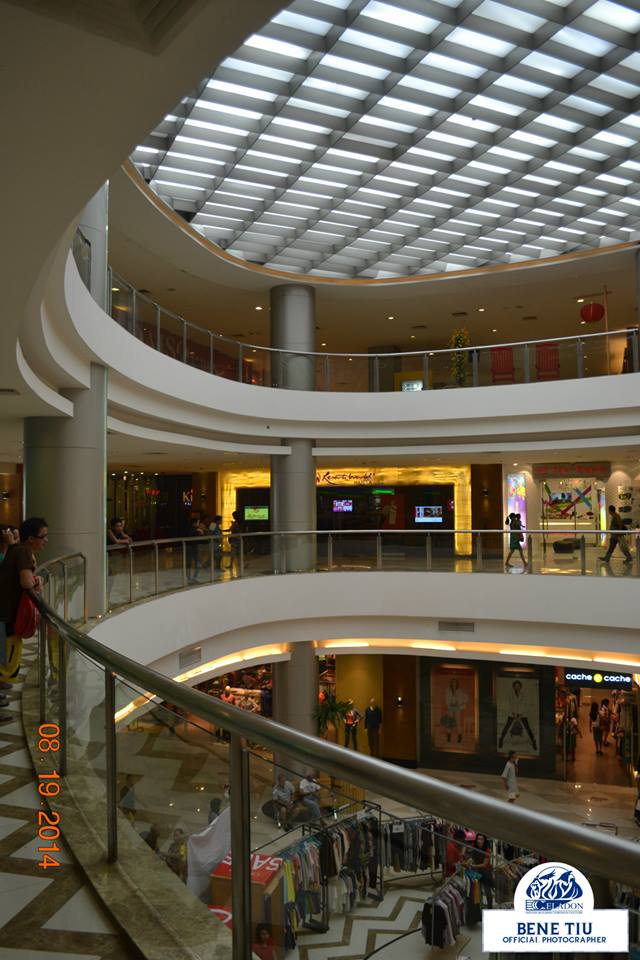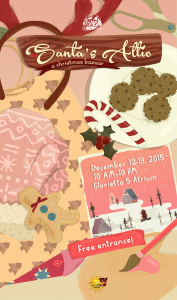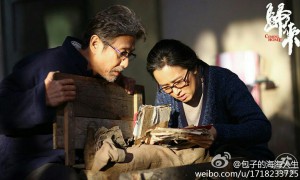Positioned just at the very heart of Binondo, Manila stands a mall swarmed over by both Filipino and Chinese alike. In-between the two grand dragons of Chinatown retail industry known as the 168 Mall and the 999 Mall, Lucky Chinatown Mall (LCM) is the new hotspot hangout for the Chinese-Filipino; a trifecta of stores and stalls that reflect both cultures in one trendy mall.
Ever since CNNGo, CNN network’s travel guide website, declared Manila’s Chinatown to be 4th in rank on the “World’s Best Chinatowns” list back in 2012, LCM had been Megaworld Lifestyle Corporation’s attempt in “inject(ing) new excitement and breathe new life into the area while staying true to its Filipino-Chinese roots (Reyes).” They had done this by creating an upscale mall normally found in the likes of places with well-established business communities such as Taguig, San Juan and Makati, but placing it in the heart of Binondo.
Opened just recently on 2012, LCM was born in Reina Regente Street with the mission and aim of reinventing shopping and leisure experience in Binondo. Boasting of a height of five levels, LCM hosts a variety of attractions that is sure to attract all kinds of shoppers like moths to a flame. Aside from the usual fanfare of dining services and stores normally found in malls, LCM takes pride in the fact that it owns four state-of-the-art movie cinemas, a couple of annex buildings, and a soon-to-be structured heritage museum that elaborates on the historical details of the Filipino-Chinese.
Why wouldn’t customers want to go there and plan ahead for their itinerary? Bench, Giordano and MANGO are some of the many higher-end retail stores found there. For the restaurants and food services within the mall, here are some: King Chef Seafood, Kogi Bulgogi and Pepper Lunch, plus more. Seems like a worthwhile leisurely place, no?
But I’ve been asking myself this: how and why is it called “Lucky” Chinatown Mall? Also, with tiangge malls as neighbors, why go to a mall where consumer products tend to be more expensive than those of 168 and Divisoria?
The answer is simple. Location, heritage, and culture contributed to the success the mall possesses right now.
The Educational Hangout Spot
Aside from it being at the heart of Chinatown thereby attracting the attention of the numerous Chinese-Filipino people residing there for the sake of cultural relevance, its location interestingly serves as a convenient hangout spot for the local Filipino-Chinese school students as LCM is situated right in the middle of the Chinese school district.
While serenading its customers with Chinese songs in a stroll through the mall, LCM would happily provide mall-goers with important details on the events surrounding the celebrations with historical backgrounds by putting out artistic boards with pictures and information about the event—in English and in Chinese! An example that would come to mind would be the story of the Dragon Boat Festival (端午節/Duan Wu Qie), which was held around June. Its story revolves around a particular patriotic poet and the aftermath of his death to the people from his era. As a way of honoring him, ma chang became the main delicacy of the festivity, while the dragon boats (and the drumming that accompanies them) serve as the people’s reminder of what he did for China and what drove him to do that particular act he was well-known for. Truly an educational fact that would spur the minds of the Filipino-Chinese youth.
Wicked Architecture
The mall’s architectural design shows and proves true to its Filipino-Chinese roots by infusing Chinese symbolism. Outside, the square-shaped design of the building’s façade is meant to symbolize the earth. In ancient Chinese belief, squares were the symbolical equivalent to the concept of the earth, mirroring the shape itself and the outdated superstitious belief that the earth was flat and bound by four corners like the map.
The first thing you would notice upon entering and heading into the mall’s centermost portion would be its atrium’s unusual circular structural design. The mall’s atrium is uniquely shaped in a way that all floors form a seemingly elliptical mall structure. For the Chinese, circular objects generally represent the everlasting heavens as the circular shape had no end. This is why circles are considered lucky to the Chinese especially since they are recurrent in most Chinese festivities in the form of round fruits, round tables, etc.
In placing both the shapes of the square and the circle together in one elaborately-designed mall, perhaps the mall’s founder wanted everyone, who would so much as window shop, to know that the ‘heavens are touching the earth’ in LCM. In other words, fortune and good luck await you within the bounds of that mall.
A Place to Remember: Chinatown Walk
Here’s the mall’s main attraction. Enclosed between two of LCM’s buildings, and with a clear, frontal view of one the mall’s many annexed buildings would be LCM’s famous Chinatown Walk. Reminiscent of the old, historical Chinatown back during the pre-colonial Philippines when Chinese traders came to do their business on Philippine shores, the famed strip serves as a cultural throwback. If you’ve been to either Hong Kong or China’s night markets, then the whole scene would look oddly familiar. The designs of the two enclosing buildings were meant to resemble old Chinese structural edifices; hanging above the strip would be numerous alternating red and yellow Chinese lanterns normally found during festivities such as the Chinese New Year and the mooncake festival; banners of various colors written in both English and Chinese (depending on the store) were similarly hung in place and were perched directly on top of their home stores.
The stores found there, by the way, are mostly Chinese-themed. Ranging from drugstores (Ai Ren Tang Drugstore), to restaurants (Mann Hann), to Feng Shui merchandising (Phoenix Dragon Feng Shui Store), the Chinatown Walk offers plenty of Chinese-related products to the patrons. Aside from all these, the strip is most well-known for their offer of various street foods. One unnamed set-up that comes to mind sells local Filipino snacks such as barbeques, isaw (intestines on a stick) and betamax (chicken blood on a stick) sell for 25 pesos or below along the side invokes the image of a typical Hong Kong strip where one can find numerous set-ups selling various vibrant street foods in the midst of a busy shopping crowd. Cha Cha Food House, a stall that sells Chinese delicacies such as pumpkin cakes on the other hand, reminds us of the colorful scenery one can find on nostalgic tour of China. The complementary mix Chinese and Filipino foods, along with the usual fanfare of interracial merchandises, make the Chinatown Walk a blend that cannot be found elsewhere but in Binondo.
Does Lucky Chinatown Mall deserve to be called “lucky”? Judging from the fame it has garnered over the recent years, the answer is yes. Those who are either going or planning on going to the famous mall will experience prosperity while they’re there: what better way to attain luck and fortune than to visit Binondo’s first ever heritage mall in the vicinity? Getting the chance to visit the place while dropping by Binondo? Now that’s lucky.
Written By Marella Lozada





Pingback: 7 Things About Passion That Elements Staffers Discover - Elements Magazine